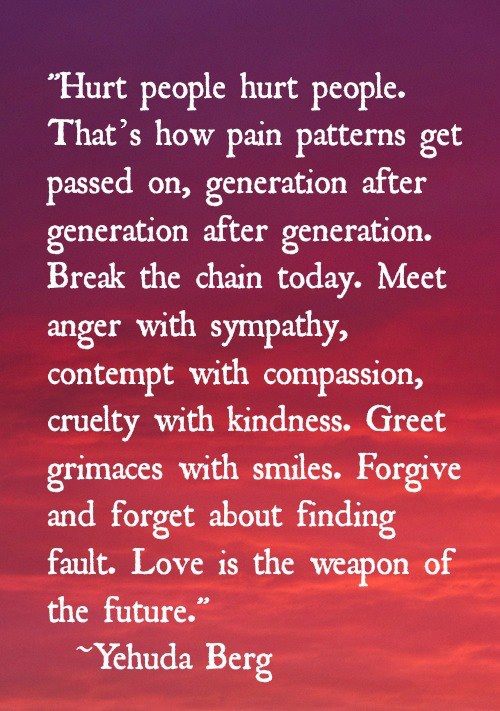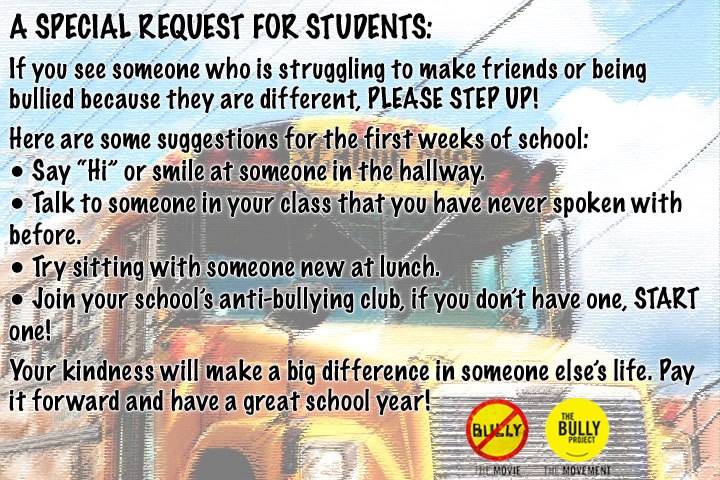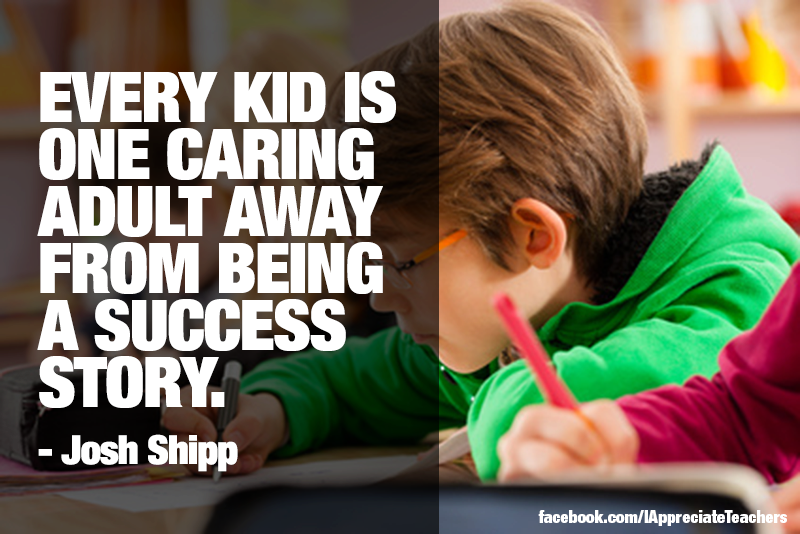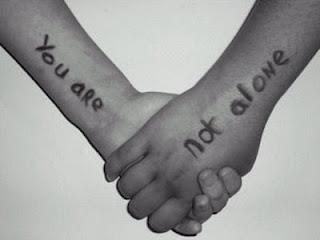Posts tagged bullying in schools
How to Stand Up to Gossip and Cruelty
0.
Here’s a great 2-part story, shared with permission by a friend, about her young daughter learning to use her voice to stand up to gossip and cruelty:
So, this is a story that I hope brings a chuckle to you. My youngest daughter, L, deals with and comes home with a lot of girl drama in her class and yesterday began relaying the latest. As she started, I said I didn’t want to hear anything about these girls because it’s a waste of our energy to keep spending time on their issues. While she’s never their target, they triangulate and manipulate for their own purposes and put kids like her in uncomfortable situations. She quickly stopped me, “No, mom, you need to hear how I stood up for myself. Today, _____ started saying something nasty about ____ and I said, ‘stop right there—I am NOT a part of this situation’ and _____ shrugged her shoulders and walked away”.
With that one sentence she stopped hurtful, negative energy in its tracks and sent a very clear message to a master drama queen. And she felt empowered. We applauded her and she ran out of the room with my phone. She returned with the Wonder Woman theme song blaring and dancing, showcasing her strengths as a young girl facing down mean girls and their manipulations. It’s a big thing when a child learns the power of her words, that they alone are weapons against unkindness. Proud mama moment. May we all raise wonder women.
Part 2, 4-days later:
My two cents:
How to Listen so that Kids Will Talk About Bullying
0In the last several years of working as a School Counselor and speaking with professionals, parents and students across the United States on the topic of Bullying Prevention, one of the observations that stands out to me the most is that parents, in general, are very eager to talk about bullying while their kids, on the other hand, seem to want to do anything but talk to their parents about this topic. The more parents pry, the more kids withdraw. The more parents push, the harder kids pushback—with excuses, minimizations, abrupt subject changes, stonewalling, silence, and sometimes even complete denial that a peer problem exists.
Why is it that so many young people are so loathe to talk to their caregivers about bullying? The more I ask students this question, the more often they tell me some version of this frustrated rationale:
“If I tell my parents, they are going to make a big deal out of it and tell everyone what’s happening to me.”
Or
“If I tell my parents, they’ll rush into school to try to meet with the Principal, which will definitely make things way worse for me.”
What can parents, caregivers, educators, and other trustworthy adults do to help a young person feel safe enough to confide in them about a bullying situation? How can you make your child feel supported—instead of embarrassed or endangered—enough to tell you when they really need your help?
When I ask school-aged kids how they would like their parents to respond when they tell them about a bullying situation, again the responses are nearly universal. Most commonly, kids tell me, “I just wish they’d listen.” This is frequently followed by, “I wish they’d give me some advice but let me try to handle it on my own first.”
What follows are five guidelines for parents and professionals on how to listen well and respond in helpful ways when a young person reports an incident of bullying:
1. Stay Calm
First and foremost, when a young person takes the leap of faith to talk to you about a bullying situation, stay calm. Avoid freaking out. The dynamics they describe may be very run-of-the-mill or they may be entirely appalling, but either way, your role as a helpful adult is to listen well and respond as if the situation is completely manageable. The steadfastness of your response will go a long way in shaping the child’s attitude as the two of you begin to move forward toward solutions.
To read the remaining five guidelines about how to listen well to young people so that they will talk honestly about bullying, please visit the original posting at Psychology Today.
Using 8 Keys to End Bullying in a School Setting
0
This week, as part of a graduate course assignment following the completion of my 2-day Managing Conflict in Schools course, an Education professional submitted this personal reflection paper on how the concepts from 8 Keys to End Bullying: Strategies for Parents & Schools can be applied in his work setting. The student was kind enough to agree to allow me to share his writing with you:
Personal Reflection – 8 Keys to End Bullying: Strategies for Parents & Schools (2014)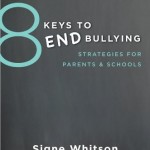
Blair Raugust
Augustana College
June 2014
Bullying. An issue that gains constant attention in society, the media, and most importantly for myself; schools. I have been in the education field for the past four years and over this time have witnessed accounts of bullying within the school environment. I wish that I could say that my undergraduate degree properly equipped me with the skills and tools that I would need to effectively intervene; however, in my experience I feel it was left out of my university education. It is a terrible feeling as a teacher when you witness bullying in your school, or know that it is happening, and you are not confident in your abilities to effectively address the situation. I was thrilled when I was able to attend a two day seminar in Victoria B.C. hosted by Signe Whitson titled: Managing Conflict in Schools: Practical Strategies to Stop Bullying and Help Kids Handle Anger Effectively. I found the two day course provided practical, effective solutions that I would be able to incorporate into my teaching when I returned to work on the following Monday. Furthermore, I was provided with a copy of a book written by Whitson titled: 8 Keys to End Bullying: Strategies for Parents and Schools (2014). This paper is a personal reflection on the book with the focus being on specific strategies and applications that I found useful and how I plan to use them in my class room and school.
I recently obtained a graduate degree in Education Leadership and School Improvement from the University of Alberta. A theme throughout the two year program was the necessity of establishing positive relationships with teachers, parents, administrators, and students. The importance of relationships was also highlighted by Whitson as an instrumental contributor to effectively end bullying. I found the three points that Whitson gave on why strong relationships with teachers are important to have a great impact on me. Whitson’s three points are: 1) Kids who bully act without the hindrance of disapproval by a grown-up that matters to them, 2) Kids who are victimized feel isolated from sources of support and intervention, 3) Kids who witness bullying have no one to turn to and report what they have seen. I feel that these connections are even more important when Whitson reports that bullying most often happens when no teachers or adults are present. I believe that students need to know that there are adults around them that will provide support. I found it refreshing when Whitson pointed out that sometimes the solutions that adults provide don’t need to be groundbreaking. We may not always have the answers or be able to rectify a situation immediately. Often a simple comment such as, “I am really sorry that this is happening to you” can provide some much needed relief to students. Whitson makes it clear that, “Teachers play a pivotal role in a schools effort’s to bring an end to bullying” (p. 55). School leaders and educators cannot hold the opinion that addressing bullying is not part of my job description or use the excuse, “if it did not happen in my class, it is not my problem”.
In the book Whitson argues that in order to stop bullying students need to be taught how to properly respond to it. Prior to reading the book, my first reaction when I witnessed a student being bullied was to discipline the child who was bullying; however I quickly learned this was the wrong approach. Whitson acknowledges in the introduction to Key 5, that a common approach among adults is to directly punish the aggressor. Davis and Nixon (2010) found that adult actions aimed at changing the behavior if children who bully are actually more likely to make things worse for their victims – not better (as cited in Whitson, 2013). Whitson urges teachers to help students develop important social and emotional competencies. Whitson points out the effective social and emotional learning (SEL) programming, “Drives important social outcomes such as positive peer relationships, higher levels of caring and empathy, increased social engagement, and reduction in problem behaviors such as bullying” (p. 97). Whitson proposes five components of a bully prevention SEL program: 1) Emotional Management – learning to manage strong feelings in constructive ways, 2) Empathy – the ability to understand how another person is feeling in a particular situation, 3) Problem solving and Conflict Resolution – teach students how to manage life’s inevitable conflicts in independent and respectful ways. 4) Assertiveness – being able to communicate in a verbal, non-blaming, respectful way, 5) Friendship building – being able to establish and maintain positive friendships. I found this section to be very important for teachers to realize and as Whitson points out, it’s important to teach these skills in the early years of formal schooling. Although teaching SEL is not part of the curriculum, I feel it is part of our duty to help young people develop these skills before they enter adult life. “Integrating SEL into the standard school curricula, from the earliest years through high school graduation, is a proven way to fortify kids with the skills they need to cope with bullying and to thrive in all of their interpersonal interactions (p. 120).
I mentioned earlier that I was appreciative of the “ready to use” strategies that are include through the book. Whitson includes specific activities that teachers can use with their students to help them understand bullying. Often times when attending professional development opportunities and reading books on educating young people, I have found that there are great ideas for teachers but they often lack to practical application aspect; Whitson managed to affective address this issue throughout the book. Furthermore this book is not only indented to reach out to teachers but also is intended for: parents, administrators, youth workers, and counselors. There is sound advice and strategies for all people who are invested in improving the emotional well-being of children.
References
Whitson, S. (2014). 8 keys to end bullying: Strategies for parents & schools. New York, NY: W.W. Norton & Company, Inc.
Psychology Today Post: What Will it Take to Stop Bullying?
0
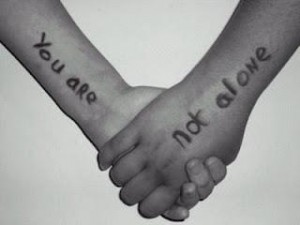 As a school counselor and educator on the topic of Bullying Prevention, I get to do a lot of reading, thinking, and talking on the subject of unwanted aggression in schools, families, and communities. More importantly, I aim to do a lot of listening to the teachers, parents and students who make up my audiences, for these are the people from whom I gain the most profound insights about the cruelty of bullying as well as the resilience of the human spirit.
As a school counselor and educator on the topic of Bullying Prevention, I get to do a lot of reading, thinking, and talking on the subject of unwanted aggression in schools, families, and communities. More importantly, I aim to do a lot of listening to the teachers, parents and students who make up my audiences, for these are the people from whom I gain the most profound insights about the cruelty of bullying as well as the resilience of the human spirit.
Recently, a mother described to me the very emotional account of her son’s experiences with bullying throughout middle and high school. I was instantly moved to tears at her son’s painful experiences, shocked at the bland responses of too many adults who failed him, grateful for the nurturing care that finally came his way in school and amazed by the strength of his mother who was a warrior on his behalf.
Although this mother did not originally intend for her story to travel past my ears, I asked her for her permission to share it (with identifying details changed) because it is an important story of hope and perseverance and because while I know that her journey is all-too-common, I also know that families traveling down this road often feel as if they are completely on their own. She and her son agreed to let their story be told as a way to help others understand that they are not alone and to educate helping adults on how to effectively reach out to kids–and how to never, ever downplay a report of bullying.
Here it is, with profound thanks to one very brave mother and child for allowing their story to be shared:
New Review of 8 Keys to End Bullying: Strategies for Parents & Schools
0My newest book, 8 Keys to End Bullying: Strategies for Parents & Schools is now available online and in stores. This review, posted in the Summer 2014 Newsletter from Barclay & Associates, provides a chapter by chapter summary:
http://us7.campaign-archive2.com/?u=c7443bd17831f510a68f39215&id=5432c936f6&e=75c608d3c9
Library Journal Posts Its Review of 8 Keys to End Bullying
0Check out the Library Journal’s review of my newest book, 8 Keys to End Bullying: Strategies for Parents & Schools:
8 Keys to End Bullying will be released at the end of this month. For more information, please click here or find it on amazon.com!
10 Guidelines for Kids on Dealing with Cyberbullying
0In my book, 8 Keys to End Bullying and in my trainings for professionals, parents, and students on strategies for dealing with bullying, I talk about the importance of dealing directly with cyberbullying–rather than throwing our hands up and believing there is nothing we can do about unwanted online aggression. I also talk about how challenging traditional advice is for young people to implement. While it’s easy for an adult to advise, “If he’s posting mean things, just block him,” this advice (albeit good advice) is incomplete in that is doesn’t acknowledge the primacy of social networks in young people’s lives and how difficult an easy thing like blocking can be.
Training sessions are great for talking through these very complex issues. Outside of training, in interactions with kids, I suggest that it is helpful for young people to be equipped with more than just Plan A (e.g. “Blocking”) for dealing with cyberbullying. In fact, young people should be prepared with Plan B, Plan C–and perhaps even Plan D–along with a whole lot of adult support in order to effectively and comfortably manage this issue.
So below, please find 10 Guidelines for Kids on how to deal with cyberbullying, representing various options that can be used simultaneously or one-by-one, on an as-needed basis. I hope you find them helpful!
10 Cyberbullying Guidelines for Kids
Please feel free to share this post and these guidelines with friends and colleagues who may find them useful in their work or personal interactions with kids. More information and suggested strategies for dealing directly with cyberbullying are available in the 8 Keys to End Bullying book or via my training workshops for professionals, parents, and and kids.
Helping Your Tween Stay Strong in the Face of Bullying
0Through the wonders of social media, I have met up with some fascinating people doing great work with kids. Recently, I connected with Heather Thomas at The Helpful Counselor, who was nice enough to share my post about 4 Things Your Tween Needs to Know to Stay Strong in the Face of Bullying. I hate to bounce you from one site to the next, but please check out my post over on her site, then check out all of the other great things she has to offer!
The Long Term Impact of Bullying: What Parents, Teachers, and All Adults Need to Know
0As an author and educator on bullying, I have a keen sense about the urgency of my message but also a healthy awareness that as people sit down to attend one of my trainings, they may begin as “prisoners.” In other words, some boss or supervisor somewhere assigned the person to attend, though what they’d really rather be doing is preparing their classroom, working on lesson plans, collaborating with other teachers, or, well, anything but listening to another talking head droning on and on about an educator’s obligation to stop bullying. Yes, the bullying that was once never talked about has now have become so pervasive (and too often finger-wagging) that us anti-bullying messengers have run the risk of sounding like the teachers in the Charlie Brown cartoons.
My goal is always to turn the prisoners into opportunity-seekers: to help educator’s understand that they are in the rare position to “be that one person” in a child’s life who makes the child feel heard, understood, valued, defended, and strong. Likewise, teachers can reach out to kids who bully, understand the pain behind their aggressive behavior, and teach those students better way to behave, more constructive ways to exert power and control in their lives. As Haim Ginnot once said, teachers really are THE decisive element in the classroom.
This article, featured online in Science Daily, is a great tool for helping teachers, parents, and all adults understand the long term impact of bullying and realize that stopping bullying is not just one more item on the To Do list, but rather a critical opportunity to make all of the difference in a child’s long term well-being:
http://www.sciencedaily.com/releases/2013/08/130819102708.htm
It is the Adult’s Obligation to Remain Connected to Kids, to Help Stop Bullying
0Great article in Education Week about the moral obligation of educators–and all adults–to remain connected with kids and take decisive action to prioritize the dignity and safety of young people.
“…schools have a responsibility not only to help students learn, but also to keep them safe, physically and emotionally, while they are in our care. If we are not addressing the culture of bullying and public shaming, if we are not doing everything we can to teach young people how to treat each other kindly and civilly, if we are ignoring social and emotional crises unfolding before our eyes, we are failing Rehtaeh and thousands like her.”
To read more, please visit: http://www.edweek.org/ew/articles/2013/08/07/37azin.h32.html?tkn=ZMSF27GGZeLPugmJWLy3TPmVIskIUi5%2B7KZS&cmp=ENL-EU-VIEWS1

